
Sicily is the largest and most populous island in the Mediterranean Sea and one of the 20 regions of Italy. It is one of the five Italian autonomous regions and is officially referred to as Regione Siciliana. The island has 4.8 million inhabitants. Its capital city is Palermo. It is named after the Sicels, who inhabited the eastern part of the island during the Iron Age. Sicily has a rich and unique culture in arts, music, literature, cuisine, and architecture.
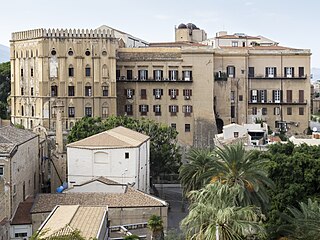
Palermo is a city in southern Italy, the capital of both the autonomous region of Sicily and the Metropolitan City of Palermo, the city's surrounding metropolitan province. The city is noted for its history, culture, architecture and gastronomy, playing an important role throughout much of its existence; it is over 2,700 years old. Palermo is in the northwest of the island of Sicily, by the Gulf of Palermo in the Tyrrhenian Sea.

Caltanissetta is a comune (municipality) in the central interior of Sicily, Italy, and the capital of the province of Caltanissetta. Its inhabitants are called nisseni.

The province of Agrigento is a province in the autonomous island region of Sicily, Italy, situated on its south-western coast. Following the suppression of the Sicilian provinces, it was replaced in 2015 by the free municipal consortium of Agrigento. It has an area of 3,041.90 square kilometres (1,174.48 sq mi), and a total population of 474,493. There are 43 comuni in the province.

Fort Saint Michael was a small fort in the land front of the city of Senglea, Malta. It was originally built in the 1552 and played a significant role in the Great Siege of Malta of 1565. Following the siege, it was rebuilt as Saint Michael Cavalier, and was completed in 1581. The cavalier was partially demolished in the 20th century, and only a part of its base remains today.
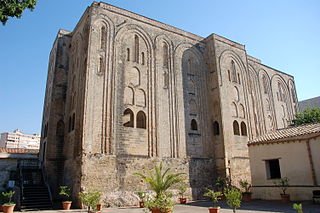
The Cuba is a recreational palace in the Sicilian city of Palermo, originally part of the Sollazzi Regi group of Norman palaces. It was built in 1180 by William II of Sicily in his Royal Park, together with an artificial lake. The name Cuba derives either from its cubical form, or the Arabic Qubba, "dome". It is an imitation of the Zisa palace. In July 2015 it was included in the UNESCO Arab-Norman Palermo and the Cathedral Churches of Cefalù and Monreale World Heritage Site.

Giuliana is a comune (municipality) in the Metropolitan City of Palermo in Sicily, located about 50 kilometres (31 mi) south of Palermo. As of 31 December 2004, it had a population of 2,234 and an area of 24.2 square kilometres (9.3 sq mi).

Sambuca di Sicilia is a comune (municipality) in the Province of Agrigento in the Italian region Sicily, located about 68 kilometres (42 mi) southwest of Palermo and about 89 kilometres (55 mi) northwest of Agrigento. It is one of I Borghi più belli d'Italia.

Castronovo di Sicilia is a comune (municipality) in the Metropolitan City of Palermo in the Italian region Sicily, located about 50 kilometres (31 mi) southeast of Palermo.
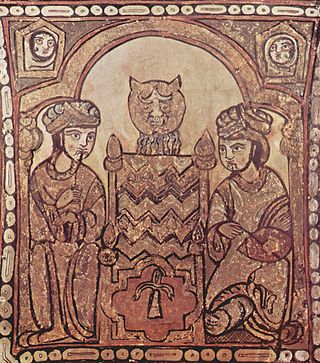
The history of Islam in Sicily and southern Italy began with the first Arab settlement in Sicily, at Mazara, which was captured in 827. The subsequent rule of Sicily and Malta started in the 10th century. The Emirate of Sicily lasted from 831 until 1061, and controlled the whole island by 902. Though Sicily was the primary Muslim stronghold in Italy, some temporary footholds, the most substantial of which was the port city of Bari, were established on the mainland peninsula, especially in mainland southern Italy, though Muslim raids, mainly those of Muhammad I ibn al-Aghlab, reached as far north as Naples, Rome and the northern region of Piedmont. The Arab raids were part of a larger struggle for power in Italy and Europe, with Christian Byzantine, Frankish, Norman and local Italian forces also competing for control. Arabs were sometimes sought as allies by various Christian factions against other factions.

Lago Arancio is a lake in the Province of Agrigento, Sicily, Italy. The reservoir is located on the territory of the municipalities of Sambuca di Sicilia, Santa Margherita di Belice and Sciacca.

Lentini is a town and comune in the Province of Syracuse, southeastern Sicily, located 35 km north-west of Syracuse.
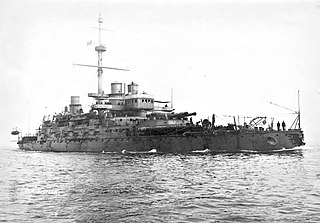
Sicilia was the second of three Re Umberto-class ironclad battleships built for the Italian Regia Marina. The ship, named for the island of Sicily, was laid down in Venice in November 1884, launched in July 1891, and completed in May 1895. She was armed with a main battery of four 343 mm (13.5 in) guns and had a top speed of 20.3 knots, though this high speed came at the cost of armor protection.

Maria Santissima dell'Udienza or Madona dell'Udienza or Our Lady of the Audience is a marble sculpture created by the Renaissance sculptor Antonello Gagini, in the early 1500s. The statue is currently housed in the apse of the Sanctuary of Our Lady of the Audience in Sambuca di Sicilia, Italy.

The Calatubo Castle is a fortress located near the town of Alcamo, Sicily, southern Italy.
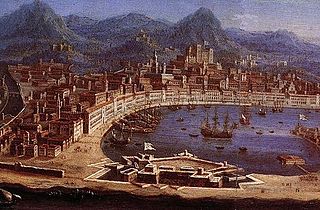
The Real Cittadella was a fort in Messina, Sicily. The Cittadella was built between 1680 and 1686 by the Spanish Empire, and it was considered to be one of the most important fortifications in the Mediterranean. Most of the fort was demolished in the 20th century, but some parts can still be seen.

Forte del Santissimo Salvatore, also known as Castello del Santissimo Salvatore, is a fort in Messina, Sicily. It was built in the mid-16th century, and it is still military property. Some of its walls were demolished after the earthquake of 1908, but the rest of the fort is still intact.

The fortifications of Messina were a series of defensive walls and other fortifications which surrounded the city of Messina, Sicily. The first walls were built during the Middle Ages in around 1200. A system of bastioned fortifications was constructed around the city in the 1530s and 1540s. The fortifications were modified over the years, with the last major addition being the Real Cittadella, which was built in the 1680s. Most of the walls were demolished in the 19th and 20th centuries, but some parts of the walls still survive today.
The Castello di Agrigento, also known as the Castrum Agrigenti, is a ruined castle in Agrigento, Sicily. In the Middle Ages, it was one of the most important buildings in the city. It was mostly destroyed in 1909, and today only a few remains of the castle survive.

Monte Adranone is a mountain rising 900 metres above sea level in the north of the comune of Sambuca di Sicilia, in the Province of Agrigento.



















